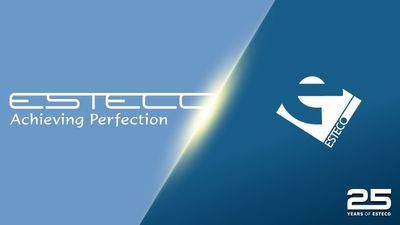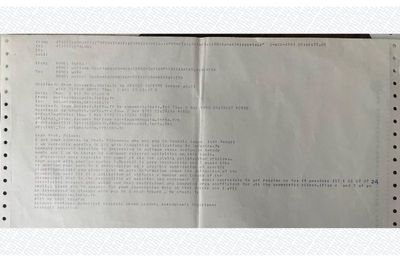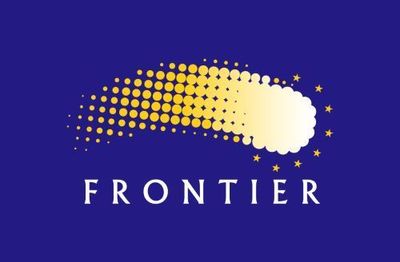25 years of ESTECO | Once upon a startup…
Written by Carlo Poloni
19 February 2024 · 10 min read

When I first traveled to Japan, I was a young researcher in my early thirties. It was 1993 and I flew halfway around the world to present my paper at the 5th International Symposium on Computational Fluid Dynamics (ISCFD). The topic of the conference was of high interest, but the budget was low. To cut costs for the University, I opted for homestay accommodation offered by the conference organizers and I was welcomed in Sendai by my host, Miwako Takahasci. I had to take three different buses to get to the conference venue, and three on the way back. I still keep the cards that Miwako wrote for me in Japanese, to ask the drivers to drop me off at the right stops.
Who would have thought that only six years later I would have founded ESTECO with two brilliant colleagues of mine? I consider that trip the first step of a long journey that led to the creation of ESTECO and to what we are now.
The right companions on the road
Like all startups, everything begins with a good idea. But looking back at our first steps, it’s clear that passion, luck and the people you meet on your way can really make a difference.
In Sendai, I met professor Oliver Pironeau for the first time. He introduced me to Jacques Périaux, a legend for a whole generation of engineers, who had contributed to the first complete aircraft simulation back in the 70s. I shared my results with him and he seemed impressed. A year later, I attended a course on Optimum design methods in aerodynamics at the von Karman Institute for Fluid Dynamics, in Belgium. To my surprise, Périaux included and credited my work in his presentation as a first successful example of optimization based on Navier-Stokes of an aerodynamic profile.

First email from Jacques Périaux to Carlo Poloni dated 2 December 1993.
This aroused great interest among the audience and on the bus to the airport by chance I got to sit beside Dick Ng, an engineer at British Aerospace. He was interested in my studies and we ended up talking about parallelization. I found they had a much more powerful machine (128 core) than the one I used at Cineca (64 core). Their machine was still underused at the time, so he and David Spicer, Chief of Technical Computing at British Aerospace, agreed to test my code there to run the optimization of an aerodynamic profile. And a few months later, we were ready to submit the call for the European funded project Frontier - Open System for Collaborative Design Optimization Using Pareto Frontiers, led by British Aerospace.

Logo of the FRONTIER project
The project started in 1995 and included Daimler-Benz Aerospace, Defence Evaluation and Research Agency, Electrolux-Zanussi, Calortecnica, Diesel Ricerche, Kvaerner Ships Equipment, University of Trieste, University of Newcastle and Parallab at the University of Bergen as partners. Renato Campo, the European Commissioner responsible for funding, appointed Jacques Périaux as the reviewer of the project. The following year, another project on engineering optimization was approved. Its name was Decision and it was led by Dassault Aviation with the contribution of Jacques Périaux. Curiously enough, Campo named me as reviewer of Decision to pursue cross-fertilization between the two. Running our research projects in parallel for three years was a privilege, but we had an ace up our sleeve : multiobjective optimization.
The right time: an emerging breeding ground for innovation
In the “Golden Age” of Evolutionary Algorithms, multiobjective optimization was a breakthrough. When the project ended in 1998, we had gained a deep understanding of engineering optimization methods and had a very promising software code in our hands. This probably wasn’t enough on its own to establish a successful business and the project could just have easily ended up with an open source code shared by all partners. Luckily enough though, the policy of the European research funding for Information Technology at the time was to encourage a commercial exploitation of the project by handing the Intellectual Property over to one legal entity.
Enrico Nobile at that time was a young associate professor at the University of Trieste and Luka Onesti was a graduate who had moved from Trieste to Bergen, Norway to work at Parallab to work on the project. Together, we started looking for financial and industrial partners to acquire the IP of the project. In the 90s, business angels and investors weren’t common in Europe but fortunately the Italian government published a new law to allow university researchers to found spin-off companies. This provided a regulatory framework to our initiative. We joined forces with Enginsoft, an Italian software and service provider in the field of Simulation-Based Engineering, and in January 1999 we established EnginSoft Tecnologie per l'Ottimizzazione Srl, also known as ES.Tec.O. One year later it became ESTECO. It was the first academic spin-off company of the University of Trieste and we found our home in the premises of Area Science Park, the first and most important multi-sector Science and Technology Park in Italy.

Luka Onesti and I in our early days at ESTECO.
Building on the outcome of the Frontier project, we quickly brought our multi-objective design optimization software, modeFRONTIER to market. With the new, proprietary Multi-Objective Genetic Algorithm (MOGA-II), the tool was the first of its kind that provided engineers with powerful and accurate numerical technology bundled with a vendor agnostic graphical simulation workflow. Our famous “spaghetti chart”, the parallel coordinates chart, has become the de-facto standard in multi-attribute representation of design solutions. Since then, we’ve never stopped pushing the boundaries of innovation in this field. I like to believe that accuracy and independence are still at the core of our essence and key to our competitive advantage.
It’s amazing how, over the next quarter century, we’ve grown from a three-person startup into a global force with over 150 employees all over the world. I like to think there’s no magic or luck involved, it’s working day after day with the same willingness to keep learning and to make things work. That’s the real driving force for every engineer out there. But if our tech offer has effectively evolved over time it’s also because of another key driver: our customers. Over these 25 years we've crossed paths with countless engineers and managers who have contributed to our success by communicating their ideas and needs.
I've saved the most important element to our success for last. Team. Team is everything. Since 1999, every employee, student and intern who has been with us has contributed to defining what we are today. Their ideas have fueled our innovation and their effort and expertise have crafted what we have to offer.
Working for the common goal of enjoying what you’re doing is what characterizes our company, our growth and our future - I hope.
A milestone to celebrate together. Looking forward
Ideas, technology and people. These are the key ingredients of our 25-year endeavor. And it’s with the people who have been integral to our journey that we’d like to celebrate this milestone, to retrace our history and to look at the future. More blog posts will come during the year, to reminisce about our growth and achievements, but we’ll also create some moments to gather.
As luck would have it, our International Users' Meeting is scheduled for June 4-6 this year. This provides us with the perfect opportunity to celebrate our 25th anniversary with customers and partners from around the world. We also recognize the importance of giving back to our hometown and local stakeholders who have been an integral part of our journey. To this end, we’re working with the University of Trieste to plan a joint initiative to celebrate our 25th anniversary and their 100th. We’re also working with the Science Center Immaginario Scientifico in Trieste to contribute to their exhibition and to create a special moment with representatives of regional partners and institutions in September.
For 25 years, building and nurturing relationships has been key to our growth, from the international scientific community to many industry professionals, from technology and channel partners worldwide to local institutions and friends. Not just local, though: Miwako Takahasci has been sending her Christmas wishes from Sendai every year, since 1993.
Thank you all.
In 1999, ESTECO was founded by three engineers as a spin-off of the University of Trieste, building on the knowledge they acquired during an EU funded project.
25 years of creating first-class software
In 1999, ESTECO was founded by three engineers as a spin-off of the University of Trieste, building on the knowledge they acquired during an EU funded project.
25 years of creating first-class software
In 1999, ESTECO was founded by three engineers as a spin-off of the University of Trieste, building on the knowledge they acquired during an EU funded project.


